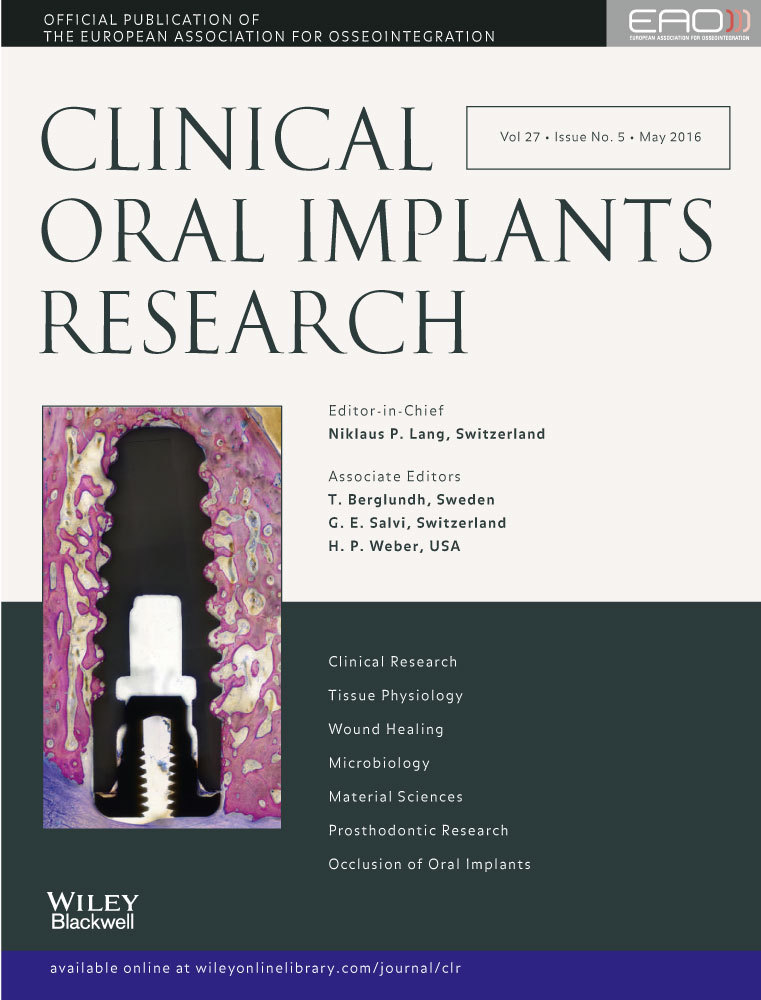Detection of peri-implant bone defects with different radiographic techniques – a human cadaver study
Abstract
Objectives
Two- and three-dimensional radiographic techniques are available to determine peri-implantitis-related bone loss around dental implants.
Purpose
To compare the performance of detecting different peri-implant bone defects in intraoral radiography (IR), panoramic radiography (PR), Cone Beam Computer Tomography (CBCT) and Computer Tomography (CT).
Material and methods
Six implants were inserted under ideal conditions into the lower jaw of an edentulous human cadaver. IR, PR, CBCT and CT were performed. Two-wall, three-wall and four-wall defects with 1 mm depth were artificially created around two of the implants (one anterior and one posterior), and radiographies were repeated. The identical set-up was used for 3-mm-deep bone defects. All images were presented to seven observers. Sensitivity (SN) and specificity (SP) were determined for each modality, defect type and depths, and likelihood ratios were calculated.
Results
The highest sensitivity was found with IR and CBCT for 1 mm (0.67; 0.68) and 3-mm defects (0.81; 0.79). The highest specificity was found with IR for both defect depths (0.51). The best classification of defect type revealed PR for both 1-mm and 3-mm-deep defects. Both likelihood ratios (LR+ and LR−) were best for IR with 1-mm (1.37 and 0.65) and with 3-mm defects (1.65 and 0.37).
Conclusions
IR should still be recommended as favourable method evaluating bone loss around dental implants, while CT demonstrated the lowest performance in detecting peri-implant bone defects.




